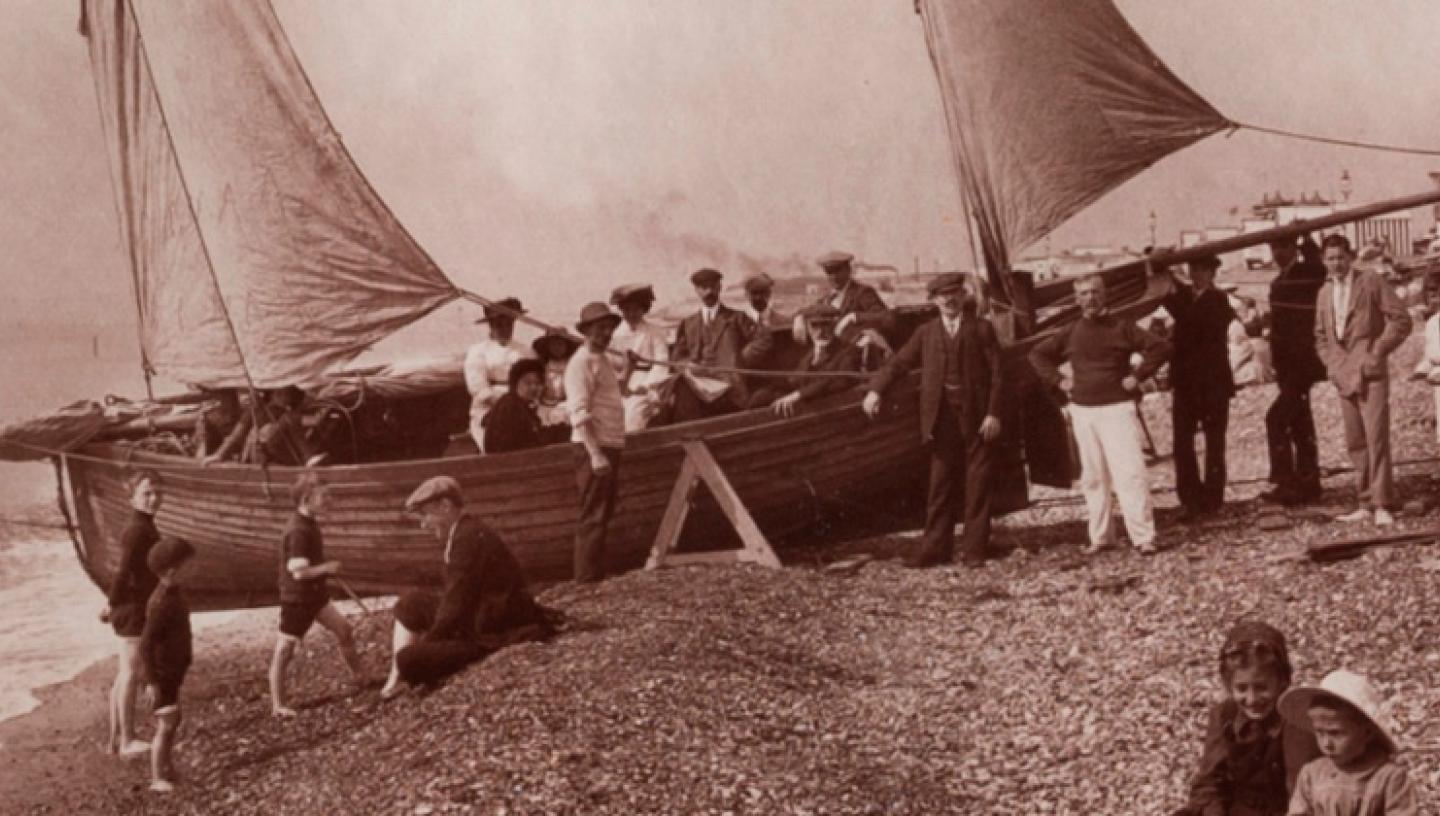
Essential Information
| Location |
Queen's House
|
|---|---|
07 Nov 2016
Assistant Paper Conservator Emmanuelle Largeteau explains the difficult challenge of mounting fragile historic photographs for display in the newly-reopened Queen's House.
When I joined the National Maritime Museum in December 2015, the entire conservation team was working toward the reopening the Queen’s House. As soon as I started in the paper conservation studio I also embarked on the adventure.
For my first project, I had to mount different series of photographs. I had little experience working with photographs but I knew that photographs were especially delicate to deal with.
My first project was the mounting part of the Gibson collection for display. This unique collection of shipwreck photographs was captured from the 1870s to the 1970s by the Gibson family. As they are very sensitive to moisture, these photograph prints couldn’t be mounted with Japanese paper hinges and wheat starch paste as conservators often do with work on paper. Wheat starch paste is a water based adhesive containing moisture and if not used very carefully it can easily deform the photograph. I needed to come up with a non-adhesive solution to have a minimal impact on the mounted object.
For the Gibson photographs, I used innovative photo corners suggested by Sam Brown, freelance framer and technician. I chose to use Silversafe® paper more suitable for photographic material.
I prepared corners with a strip of light weight Silversafe® by first folding at a 45 degree angle with the 2 ends of the strip toward the centre:
The two sides of the corner were re-opened and folded again parallel to the first fold, creating a space to insert the corner of the photograph. To get a precise fold and to create a really thin gutter I used a ruler as a guide. Cutting and folding the 48 corners for the twelve photographs that needed to be mounted took the whole afternoon.
Details of a corner:
The corners were then held down with a V-shaped hinge made of a heavier weight Silversafe®. The V-shaped hinge is attached to the mount board with gummed-tape.
One original glass plate negative is on display in the Queen’s House to accompany the display of the prints. The negative is backlit so the public can see all the details. As photographic materials are really sensitive to light, the glass plate negative will be changed for a different one after a few months and is only illuminated for a short time when visitors push a light switch.
The glass plate negative is also displayed in a window mount and framed. To let the light through I used a double window mount. I added an extra layer of mount board inside the window mount to compensate for the thickness of the glass plate negative. To secure the glass plate at the back, but still let the light through, a sheet of polyester was adhered as visible on the pictures below:
The mount is now ready to receive the glass plate negative:
Once in place, the glass plate negative was secured in its mount with strips of Silversafe® paper and gummed tape:
The mount is ready now to be sandwiched between two sheets of glass and framed.
A backlit display has been specially built to beautifully showcase the glass plate negative in the Queen’s House:
The above mounting solution was unfortunately not an option for the Frith collection. This unique collection is constituted by the archives of the firm Francis Frith & Co. founded in 1860. The photographer Francis Frith had the objective of capturing an image of every town, city and village in Great Britain. These photographs are mostly albumen prints, which tend to roll on themselves, like this one mounted with hinge at the top edge:
The photographic prints needed to be held down more securely. I looked for a mounting system that would hold the 4 edges along their entire length but masking the picture as little as possible.
After some research, I found a nice non-adhesive mounting technique presented by Jennifer McGlinchey, paper and photograph conservator.
The photographs edges are held down by a strip of Silversafe® paper folded in a “Z” form. The photograph is supported by the inner channel created by the Z-fold. The support strips are then adhered to the mount with white gummed-tape. Here is an example of one photograph mounted with “Z” strips:
As I am not specialised in photographic material, working with photographs was a real challenge. Searching for new mounting possibilities was an exciting part of the project. I really enjoyed seeing what fellow conservators had done and found a lot of very ingenious solutions that I will reuse in future projects. Once secured in their mount, the photographs were framed and tastefully installed in the newly refurbished Queen’s House, ready to welcome visitors. Mounting photographs for display is a really rewarding task as our goal is to present the pictures at their best to be able to share them with the public. Come to have a closer a look and I hope you will enjoy them along with the other wonderful objects displayed in the Queen’s House.
Emmanuelle Largeteau, Assistant Paper Conservator
Visit the Queen's House and see the photographs now on display